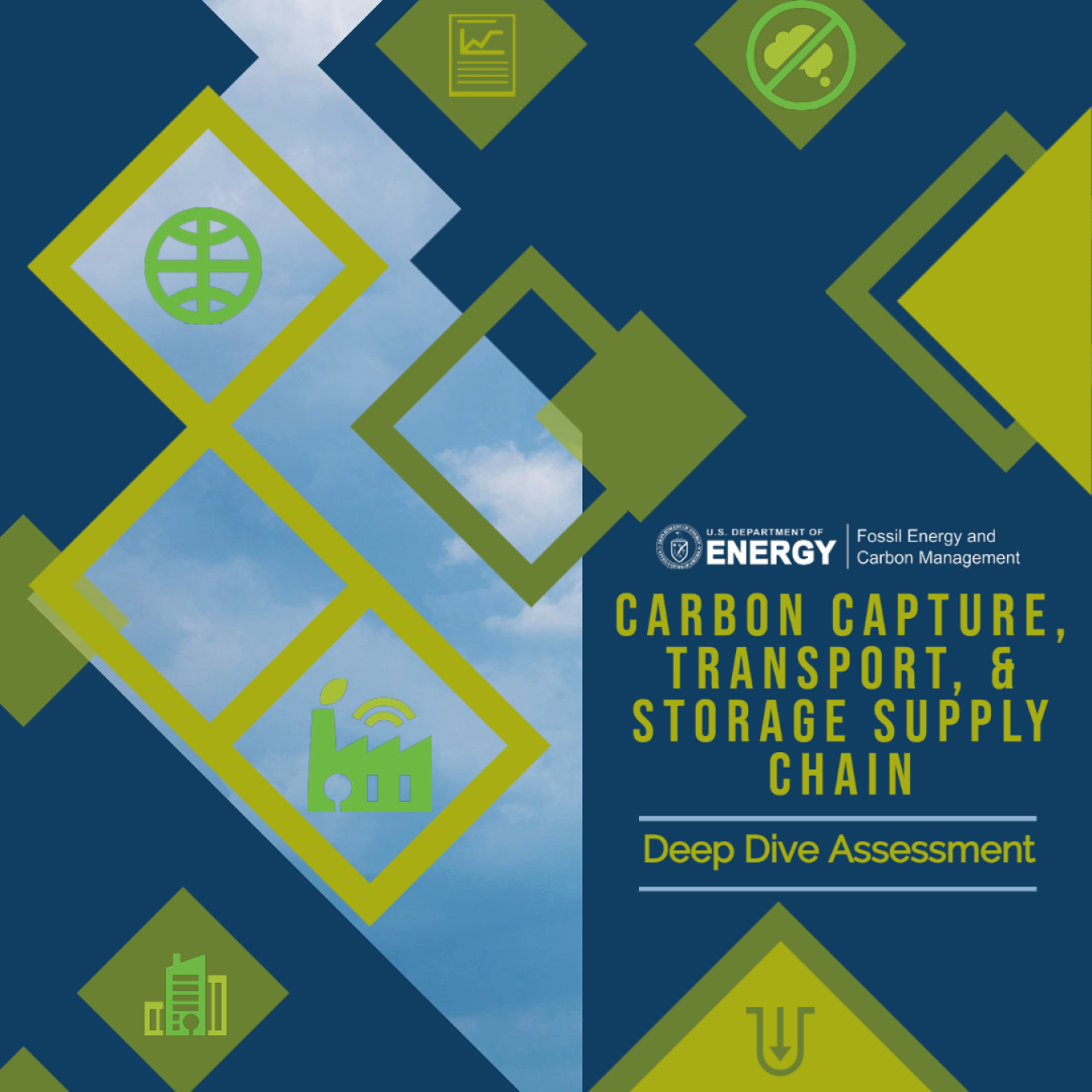Read our blog post to learn why CCS poses a low supply chain risk and how CCS deployment would provide opportunities for near-term job growth, supply chain diversity and more CCS research leading to innovations in CO2 capture and conversion technologies.
Office of Fossil Energy and Carbon Management
March 25, 2022
As part of America’s first comprehensive plan to secure a decarbonized, clean energy economy, the U.S. Department of Energy recently released the report America’s Strategy to Secure the Supply Chain for a Robust Clean Energy Transition. The report includes 13 deep-dive supply chain assessments, including the Carbon Capture, Transport, and Storage Supply Chain Deep Dive Assessment.
Carbon capture and storage, or CCS, is a suite of interconnected technologies used to reduce carbon dioxide (CO2) emissions and achieve deep decarbonization, helping support President Biden’s net-zero goals.
CCS can:
- Reduce emissions in hard-to-decarbonize industrial sectors, such as steel, fertilizer, and cement;
- Decarbonize existing infrastructure and assets in power and industrial sectors; and
- Help the most carbon- and heat-intensive industries operate with little to no greenhouse gas emissions.
The deep dive assessment investigated whether there are potential supply chain risks in advancing the development of the CCS industry. The key findings concluded that CCS poses a low supply chain risk, due to the required infrastructure relying on large amounts of common and readily available raw materials.
The assessment also concluded that CCS deployment would present opportunities for near-term job, supply chain, and CO2 capture and conversion technology growth. For example, the growth of the CCS market could help produce between 390,000 and 1.8 million good-paying union jobs in various industries, including in fossil energy communities affected by the transition to a net-zero economy. Additionally, there are several opportunities for research in the CCS space to innovate CO2 use and capture technologies. And while the CCS infrastructure can be supplied in large part by American-made components, there are opportunities to develop diversified supply chains with U.S. allies and partners that play to the strengths of each country.
Read the full assessment or the fact sheet summarizing key takeaways on the Carbon Capture, Transport, and Storage Supply Chain Review: Deep Dive Assessment page, and learn more about CCS by downloading the CCS infographic and watching this CCS explainer video.

